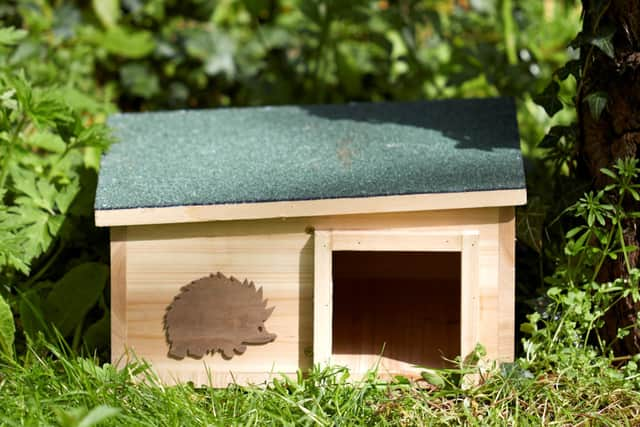How you can help our hedgehogs this autumn and winter
Sadly, up to three-quarters of all Britain’s hedgehogs have been lost in the last 30 years. To help change this, the RSPB Shop’s wildlife experts have developed a guide featuring tips and tricks to attract hedgehogs and help them hibernate safely in any garden.
One of the primary culprits behind the creature’s decline is habitat loss. With the increasing urbanisation of the UK's landscape, natural green spaces are dwindling, leaving hedgehogs with fewer places to call home. Add in the threat of harmful pesticides laying waste to the hedgehog’s primary source of nutrition, which is insects, and the situation becomes even more concerning.
Advertisement
Hide AdAdvertisement
Hide AdBonfire Night is also one of the most dangerous times for hedgehogs, with seemingly safe unlit bonfires turning into a death trap when lit.This is especially shocking when you learn that many hedgehogs have a second litter in the autumn.


However, whether you have a spacious garden or a small strip of outdoor space, there are simple measures you can take to lend a helping hand to help. Create a hedgehog highway: Hedgehogs can roam up to one mile in a single evening so help them out by creating small gaps or holes in fences, walls or bushes to allow them to move through your garden freely. A hedgehog-sized hole should be at least 13cm x 13cm and should be located low down, near the ground.
Provide hiding places: Hedgehogs love foraging amongst fallen leaves and twigs, so try to leave your garden a little wild and unkempt. Instead of binning all of your garden waste, create small hog-friendly mounds of sticks and twigs as these will provide shelter and help to attract insects.
Avoid pesticides and herbicides: Slug pellets and weed killers can prove deadly to hedgehogs and to the slugs and snails they eat so keep them out of your garden. Wood preservers should also be avoided too, as hedgehogs love to lick freshly treated fences.
Advertisement
Hide AdAdvertisement
Hide AdSupplement their diet: Hedgehogs need to fatten up before hibernation. You can leave out dishes of wet cat or dog food, meat-based cat biscuits, or specialised hedgehog food. Check for hidden hedgehogs: Before using garden equipment like lawnmowers or strimmers, check for hidden hedgehogs in tall grass or under bushes.
Remove hazards: Clear your garden of any potential hazards like netting, plastic, or other litter that hedgehogs might get entangled in. If you’ve got a pond, be sure to modify it by placing a series of small steps in there too. This way, if a hedgehog falls in, they’ll have a better chance of clambering back out.
“Hedgehogs hibernate during the cooler months, usually from November to April. Giving hedgehogs somewhere to nest is one of the best ways to support the species,” says Adrian Thomas, Wildlife Gardener for the RSPB. “From October to November, they’re on the lookout for the perfect places to hunker down and wait out the winter, away from the chilly winds and hungry predators. They will look for somewhere quiet and secluded and sheltered from strong winds and direct sunlight.”
You can make them a home out of an old wine crate or wooden box with straw bedding inside. See YouTube for inspiration. Or you can buy ready made hedgehog homes. The RSPB sell them as does Gardenesque.com. They come as a flat-pack and the entire den can be put together with a screwdriver.